Every successful restaurant depends on loyal, repeat customers.
It’s far more expensive and difficult to attract new guests every day than to bring back people who already know and love your food.
Loyalty programs make that easier—diners get rewarded for coming back, and you gain a steady, predictable revenue stream.
Everybody wins.
However, there’s an additional layer to restaurant loyalty programs that often gets overlooked: they serve as the perfect gateway to collecting customer data.
Customers can be hesitant to share their information when there’s nothing in it for them, but with a loyalty program, you bypass their reluctance with an immediate reward and unlock the ability to easily reach customers whenever you want to share a special, promote an event, or send timely offers to fill seats on slower days.
The key is choosing a loyalty program that fits your business model while making it easy for guests to track and earn rewards, and even easier for you to stay connected after they leave.
In this article, you’ll find 20 restaurant loyalty program ideas that are well-proven, along with a batch of brand new ideas to help you keep diners engaged, collect valuable guest data, and bring people back again and again.
Let’s get into it.
1. Starbucks Rewards
2. Domino's Rewards
3. Subway MVP Rewards
4. McDonald’s: MyMcDonald’s Rewards
5. Chick-fil-A One
* Ideas for QSRs
FSR loyalty programs
1. Chili’s: My Chili’s Rewards
2. Applebee’s: Club Applebee’s
3. Red Robin: Red Robin Royalty
4. The Cheesecake Factory: Cheesecake Rewards
5. Buffalo Wild Wings Rewards
* Ideas for FSRs
Frequently asked questions
Quick service restaurant loyalty program ideas
Quick service restaurants (QSRs) have set the industry standard for restaurant loyalty programs on how to keep customers engaged and coming back for more.
These big restaurant brands invest heavily in customer loyalty, but that doesn’t mean their strategies are out of reach for restaurant owners like you. In fact, most of their best ideas can be scaled down using affordable loyalty software or simple digital tools.
Below, we’ll look at proven loyalty program examples from top QSR chains and show you how to adapt them to your own business, followed by several fresh ideas that can help your restaurant loyalty strategy stand out.
Proven examples from top QSR brands and how you can apply them to your own restaurant
Each of these major restaurant loyalty programs offers lessons any operator can use, from how to structure rewards programs to how to drive more repeat customers with smart marketing.
1. Starbucks Rewards
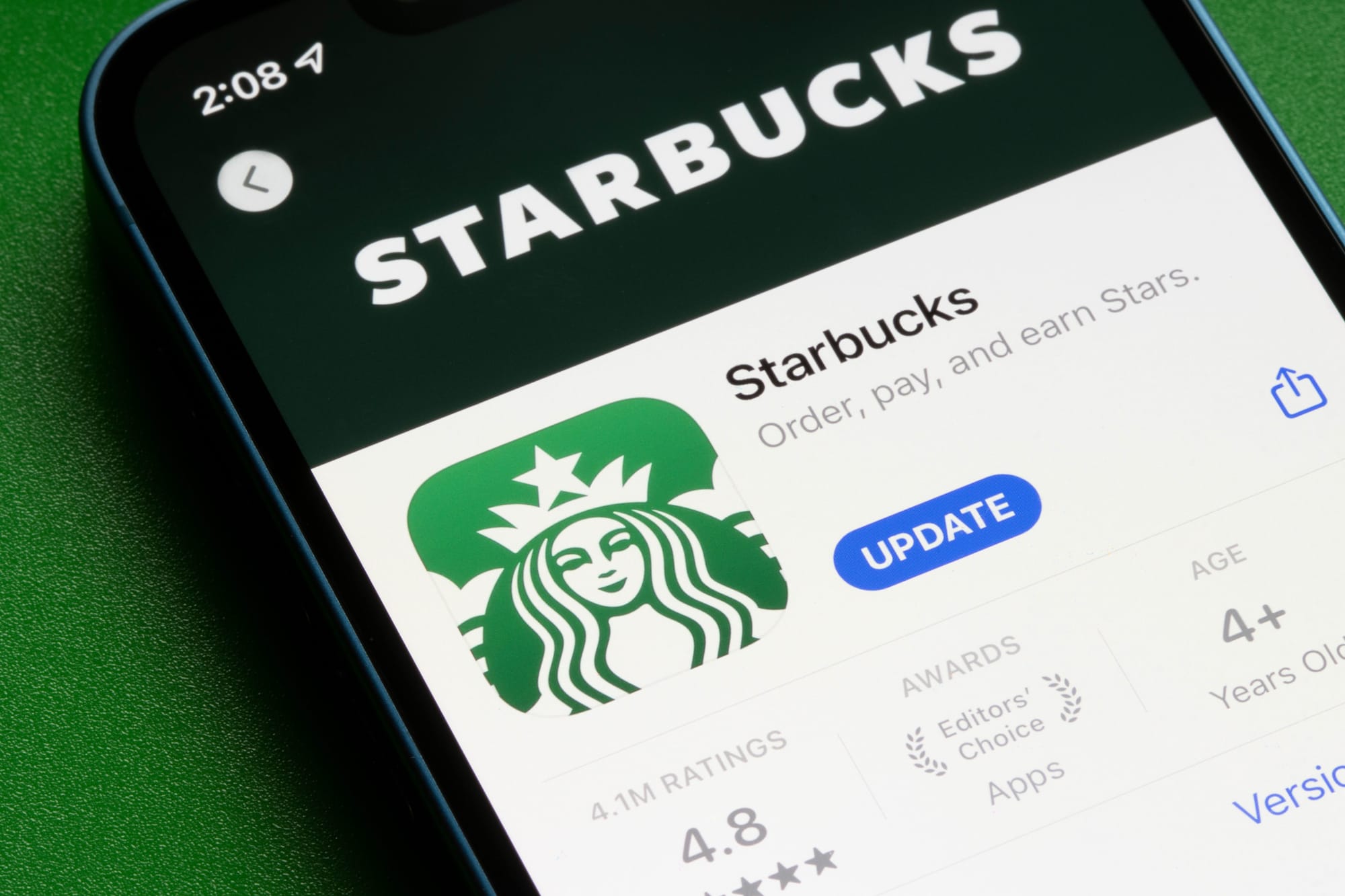
Points based
The Starbucks Rewards program is one of the most recognizable restaurant loyalty programs in the world, and for good reason. It goes beyond simple discounts to create a full digital experience that keeps customers engaged every step of the way.
Guests earn one loyalty point, called “Stars,” for every dollar spent, which can be redeemed for free drinks, free food rewards, and exclusive rewards like early access to new products. Customers can redeem rewards based on the number of stars they’ve earned.
For example:
- 25 stars = Customize your drink with an extra shot of espresso or pump of favorite syrup
- 100 stars = Free iced or hot coffee or tea, bakery item, or packaged snack
- 200 stars = Premium drink, latte, or hot breakfast
- 300 stars = Sandwich, protein box, or at-home coffee
- 400 stars = Starbucks merchandise
Their rewards program leans heavily on their app, which guests can use to track their stars, order and pay ahead of time, and earn bonus points during special promotions or limited-time offers that drive engagement.
For example, if customers “preload” money to their digital Starbucks rewards card, they’ll earn two stars per dollar spent instead of one, encouraging more frequent use and deeper brand loyalty.
Apply Starbucks’ Rewards strategy to your restaurant
You don’t need a massive app to recreate the same results. Many loyalty programs built for restaurant owners now make it easy to:
- Let guests earn points for every dollar spent and redeem them for simple rewards (like a free dessert or free appetizers)
- Offer personalized rewards through text or email—such as birthday rewards or “we miss you” offers
- Encourage guests to sign up with their phone number or email, helping you grow your marketing list for future deals
With the right loyalty program, you can entice customers to visit more often, reward customers instantly for their loyalty, and collect valuable guest data that powers your marketing long after they leave.
2. Domino’s Rewards
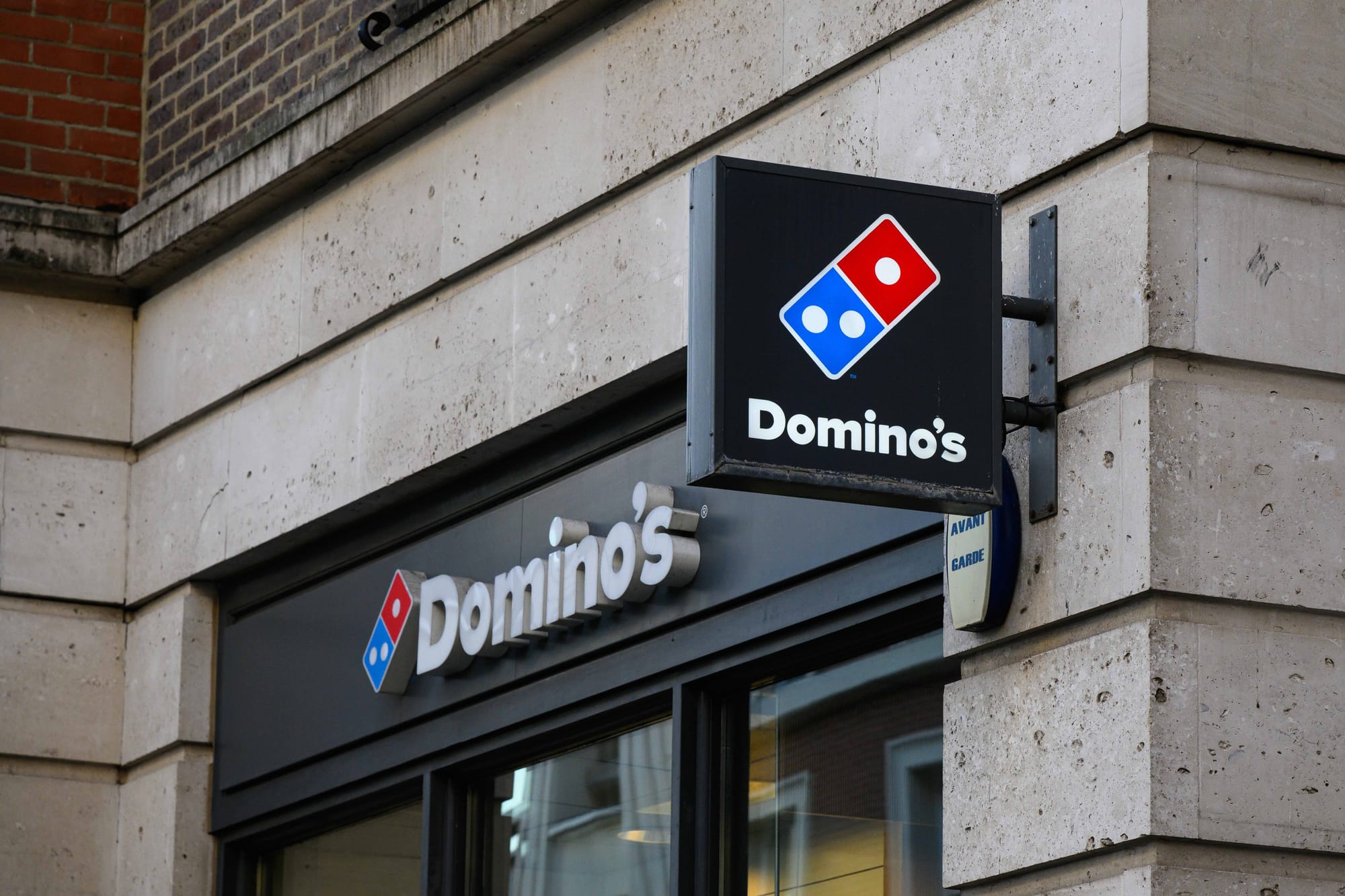
Points based
What makes Domino’s Rewards program so successful is its simplicity. Instead of complicated tiers or endless point conversions, Domino’s loyalty program is straightforward—members earn points for every dollar spent, both online and in-store, which can be redeemed for free food rewards like pizza, sides, or desserts.
Here’s how it works:
- Earn 10 points for every order of $5 or more
- Customers can redeem rewards every two orders (20 points)
- 40 points earns a large breadstick or bread bites
- 60 points earns a free pizza, sandwich, or dessert
Domino’s also keeps the experience engaging with their progress tracker so customers can visually see which step of the journey their pizza is on before landing in their hands.
This combination of gamification, simplicity, and reward points clarity has helped Domino’s cultivate strong brand loyalty and steady repeat business.
Apply Domino’s Rewards strategy to your restaurant
Restaurant operators can follow suit by implementing a clear, easy-to-understand loyalty program. Whether it’s one point per dollar or a “buy X, get Y” model, the key is making it effortless for diners to track progress and see exactly what they’re earning.
While incorporating an order tracker isn’t practical for most operators, you can still send automated emails reminding diners about their rewards progress and encouraging them to come back—simple moves that build loyalty and save money on expensive customer acquisition efforts.
3. Subway MVP Rewards
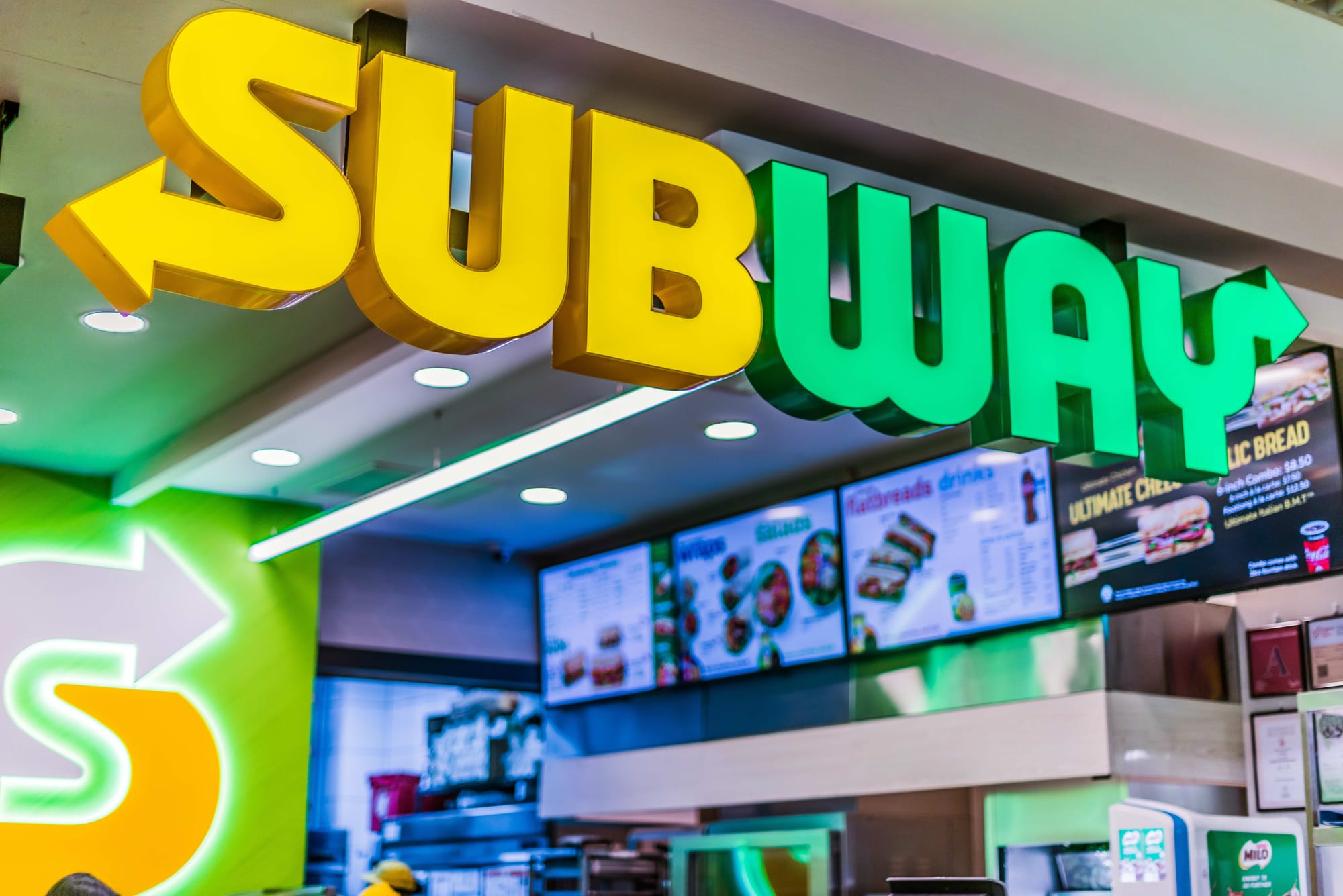
Points based
The Subway MVP Rewards program takes a more flexible approach to restaurant loyalty programs. Customers earn points and, in exchange, receive “Subway Cash.” Rewards members can then put the cash towards any purchases they choose, giving diners more freedom and value for their loyalty.
Subway's MVP Rewards is also an earned tiered system. If diners spend enough money throughout the year, they’ll go up in status and earn more points per dollar spent.
For example:
- Pro (Entry Level): 10 points per dollar spent
- Captain: 11 points per dollar after spending $200 per year
- All-star: 12 points per dollar after spending $400 per year
To maintain their tier level, a customer must meet the spending threshold every year. The program’s flexibility and transparent structure keep customers engaged while rewarding frequent customers who show consistent brand loyalty.
Apply Subway’s MVP Rewards strategy to your restaurant
The takeaway from the Subway loyalty program is its flexibility. Let guests choose how they use their rewards—whether that’s saving up for a free meal or applying smaller amounts to regular visits. This kind of control keeps diners engaged because they feel ownership over their rewards.
You can also strengthen that connection by offering birthday treats and access to exclusive perks, giveaways, or limited-time offers that make participation in your customer loyalty program feel rewarding and worth sticking with.
4. McDonald’s: MyMcDonald’s Rewards
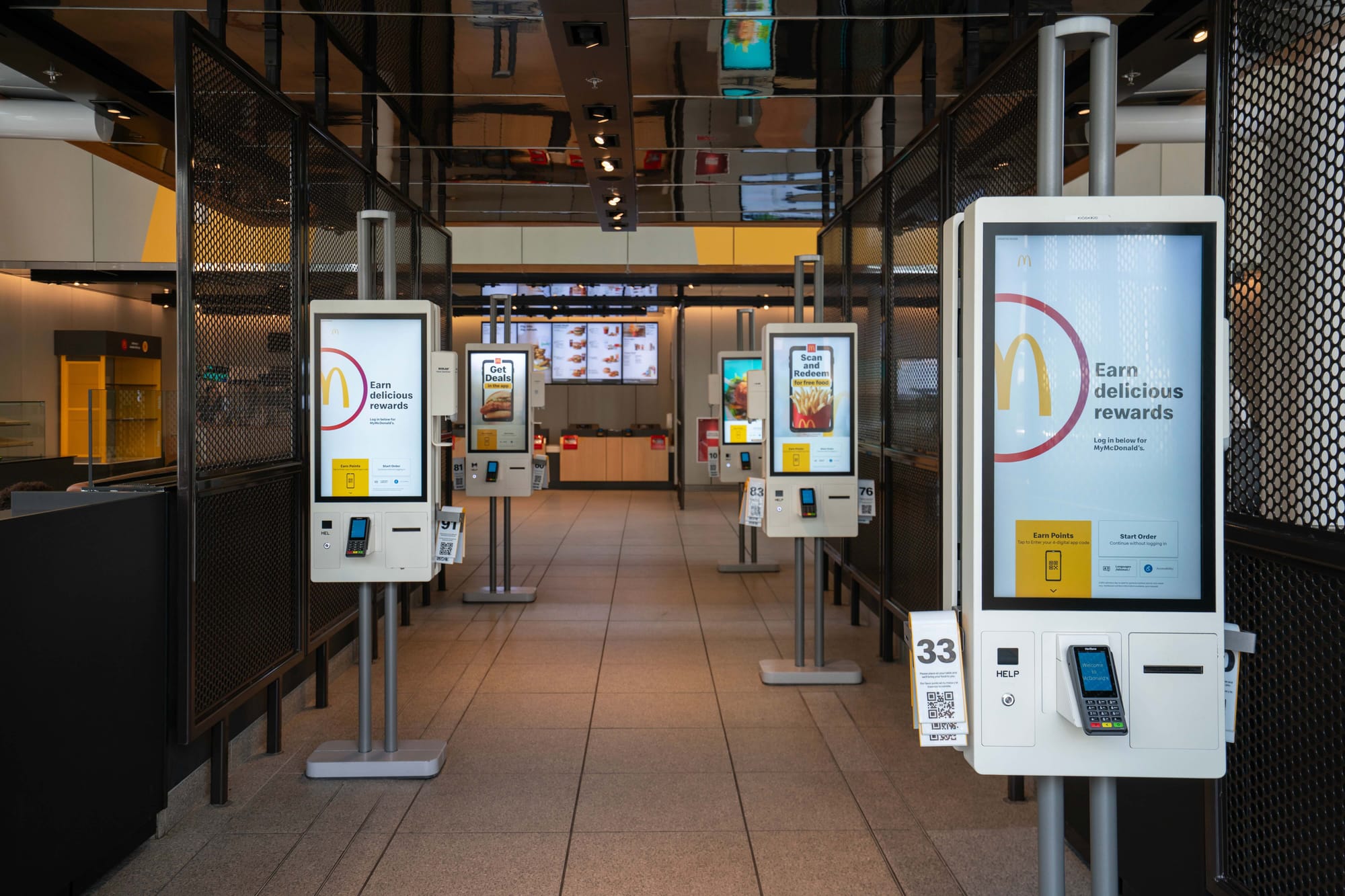
Points based
The MyMcDonald’s Reward is an app-based loyalty program that makes it easy for repeat customers to sign up, pay, and track rewards all from their phone. Members earn points on every order, whether they’re ordering in the app, at the drive-thru, or inside the restaurant, and can redeem those points for free food rewards like fries, drinks, or even their favorite burgers.
Here’s how it works:
- Customers automatically collect 1500 points after downloading the app, and earn 100 points for every dollar spent
- Redeem starting at 1500 points for menu items like cheeseburger, apple pie, sausage biscuit, and more
- Saving points to higher tiers (3000, 4500, & 6000) unlocks more enticing exclusive rewards
- Points expire after six months from the month of earning, encouraging frequent visits
The app makes tracking and redeeming rewards simple, enticing customers to order more frequently and driving stronger customer engagement and repeat business.
Apply McDonald’s Rewards strategy to your restaurant
You can mirror McDonald's by allowing diners to earn points across ordering channels (in-store, mobile, online) and offer a range of redeemable items. Keep your rewards tiers simple and transparent, and ensure your system reminds loyalty members of their balance and upcoming expirations to incentivize customers to return.
5. Chick-fil-A One
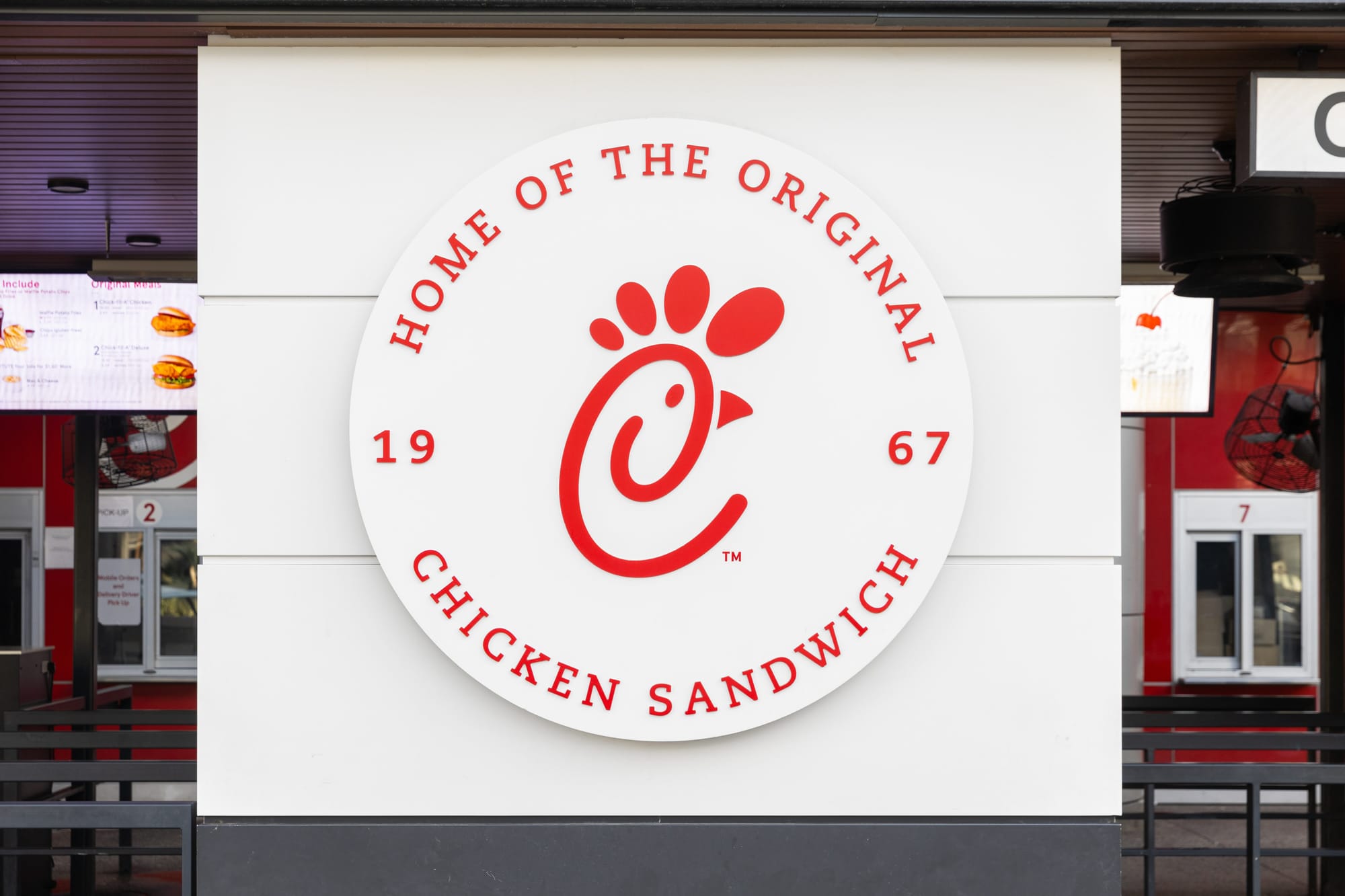
Points based
Called the Chick-fil-A One, diners earn points with every qualifying purchase, and the program has a tiered structure very similar to Subway’s MVP Rewards, except customers can’t pick and choose what to spend their collected points on.
Customers earn 10 points for every dollar spent, which can be used toward free food rewards like sandwiches, nuggets, or desserts. The more a customer spends each year, the faster they earn points and the better their perks become.
For example:
- Member (Entry Level): 10 points per dollar spent
- Silver: 11 points per dollar after earning 1,000 points
- Red: 12 points per dollar after earning 4,000 points
- Signature: 13 points per dollar after earning 10,000 points
Each tier unlocks additional benefits like birthday rewards, bonus point challenges, and early access to new menu items. Points never expire, which encourages long-term participation and builds a strong sense of loyalty.
Apply Chick-fil-A’s Rewards strategy to your restaurant
You can adapt this approach by offering small but meaningful tier levels based on annual spend or visit frequency. Start simple with a base level and one premium tier that unlocks perks like bonus rewards, priority access, or exclusive offers for your most loyal guests.
Fresh loyalty program ideas for QSRs

Your loyalty program doesn’t have to be complicated, but you should consider ways to make it special for your most loyal customers—the key is to add personal touches that make guests feel genuinely appreciated.
Here are a few ideas you can try out in your own restaurant loyalty program.
1. Help diners celebrate milestones that matter
Surprise your regulars with a free dessert, drink, or appetizer on their birthday or sign-up anniversary. It’s a small gesture that feels personal, and it’s one of the easiest ways to make diners feel remembered. Automated emails or texts can make notifying diners of their reward easy without adding work for your team.
2. Create a secret menu for your biggest fans
Diners love secret menus, but you can add an element of exclusivity by only making it available to loyalty members. It could be as simple as a sandwich variation, a specialty drink, or a limited-time dessert.
Just make sure signing up for your loyalty program is quick and easy, because non-rewards members seeing these secret menu items in person will want instant access.
3. Make earning rewards feel like a game
Keep things fun with short-term challenges like “Visit five times this month” or “Try three new menu items to unlock a bonus.” Gamification taps into customers’ sense of achievement and keeps engagement high.
4. Partner with other local favorites
Team up with nearby businesses, like a coffee shop and bakery sharing a rewards pool, so customers can earn and redeem points across multiple locations. It’s a win-win for everyone involved and will expose your brand to an entirely new customer base.
5. Use instant gratification to boost order frequency
Not every reward has to take weeks to earn. Offer small, quick wins, like a free topping or drink upgrade every third visit, or after visiting twice in one week.
These smaller rewards based on visit frequency get customers through the door more often without cutting into the points they’ve already earned. Just make sure the rewards stay modest enough not to hurt your margins but will still boost customer retention.
Full-service restaurant loyalty program ideas
Full-service restaurants (FSR) face a different set of challenges than fast-food and quick-service brand restaurants.
Guests visit less frequently but often spend more per check, which means your rewards need to feel more personalized and worth the effort—reflecting true customer preferences. When done right, these programs can make guests feel recognized, encourage repeat visits, and help you fill seats on slower nights.
Let’s look at how some major brands in the restaurant industry are doing it and how you can adapt the same strategies to your own restaurant.
1. Chili’s: My Chili’s Rewards
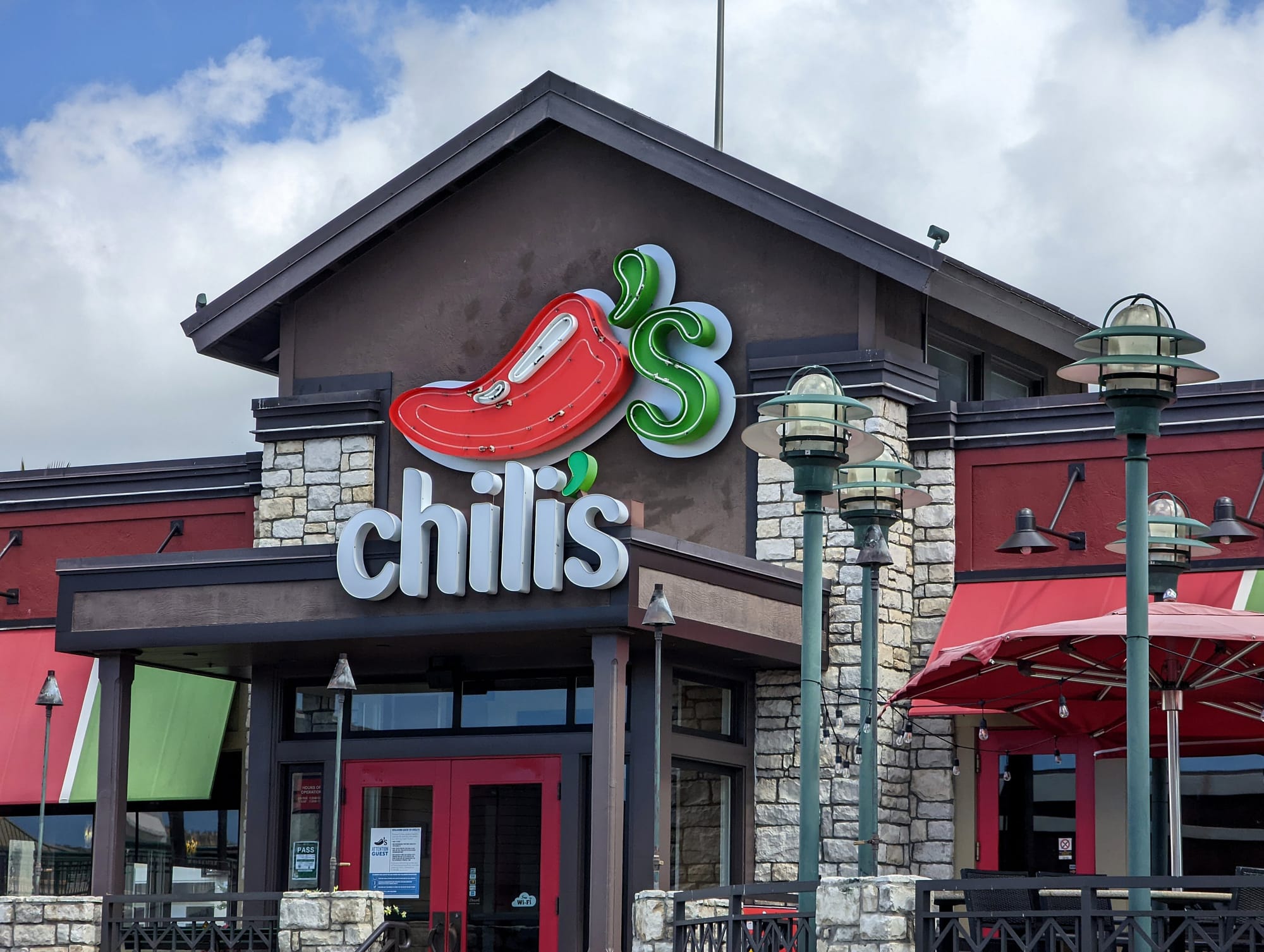
Visit based
The My Chili’s Rewards program focuses on simple, guaranteed perks that give diners an immediate reason to stop by.
Rewards members receive free chips and salsa or a non-alcoholic drink of their choice, along with other personalized benefits. It’s an instant, guaranteed reason to visit and makes guests feel appreciated without requiring them to track points or manage tiers.
Here’s how it works:
- Spend a minimum of $5 and visit every 45 days to stay eligible for free chips and salsa or a non-alcoholic drink
- Receive personalized rewards like free kids’ meals, appetizers, or desserts throughout the year
- Enjoy a free dessert on your birthday
- Reorder favorites instantly with one tap in the Chili’s mobile app
By guaranteeing a small reward with each visit and mixing in surprise bonuses, Chili’s keeps guests connected and engaged through a low-effort, high-value loyalty program.
Apply My Chili’s Rewards’ strategy to your restaurant
You can mirror this model by offering a small, guaranteed perk for every qualified visit—like a free soft drink or side dish—and layering in occasional surprises through email or text.
A “regulars club” that balances “always something” with “sometimes something extra” keeps guests coming back while keeping your offers fresh and sustainable.
2. Applebee’s: Club Applebee’s
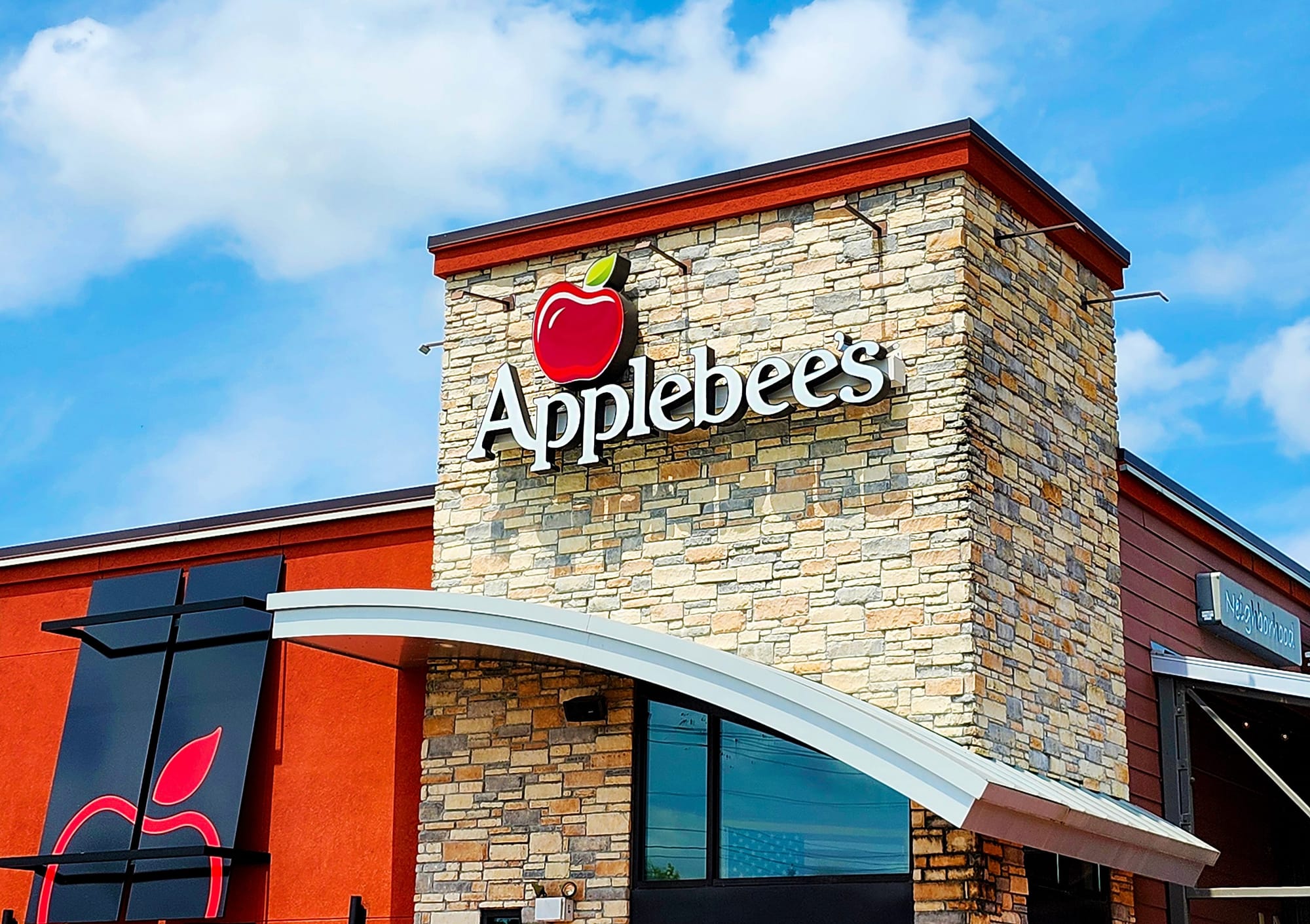
Offers-based
Club Applebee’s keeps its rewards simple by focusing on offering diners exclusive members-only deals, offers, and added perks.
Club Applebee’s members receive a steady rotation of promotions sent straight to their phone or email, though guests can text “TASTY” to a number to get immediate updates on available coupon codes.
Here’s how it works:
- Diners join and get a free appetizer on their next visit
- Every member receives a free birthday treat
- Get exclusive text and emails only available to Club Applebee’s members
- Access to unique experiences like the Date Night Pass, which gives monthly dining discounts
The program doesn’t require points or tiers; it’s designed for guests who want instant value without the added steps.
Apply Club Applebee’s strategy to your restaurant
Start by giving customers a “welcome reward” after they sign up for your loyalty program, then follow up with weekly or monthly promotions sent via email, text, or both. The goal is to stay present in your guests’ inboxes with simple, well-timed incentives that keep your restaurant top of mind and encourage repeat visits.
3. Red Robin: Red Robin Royalty
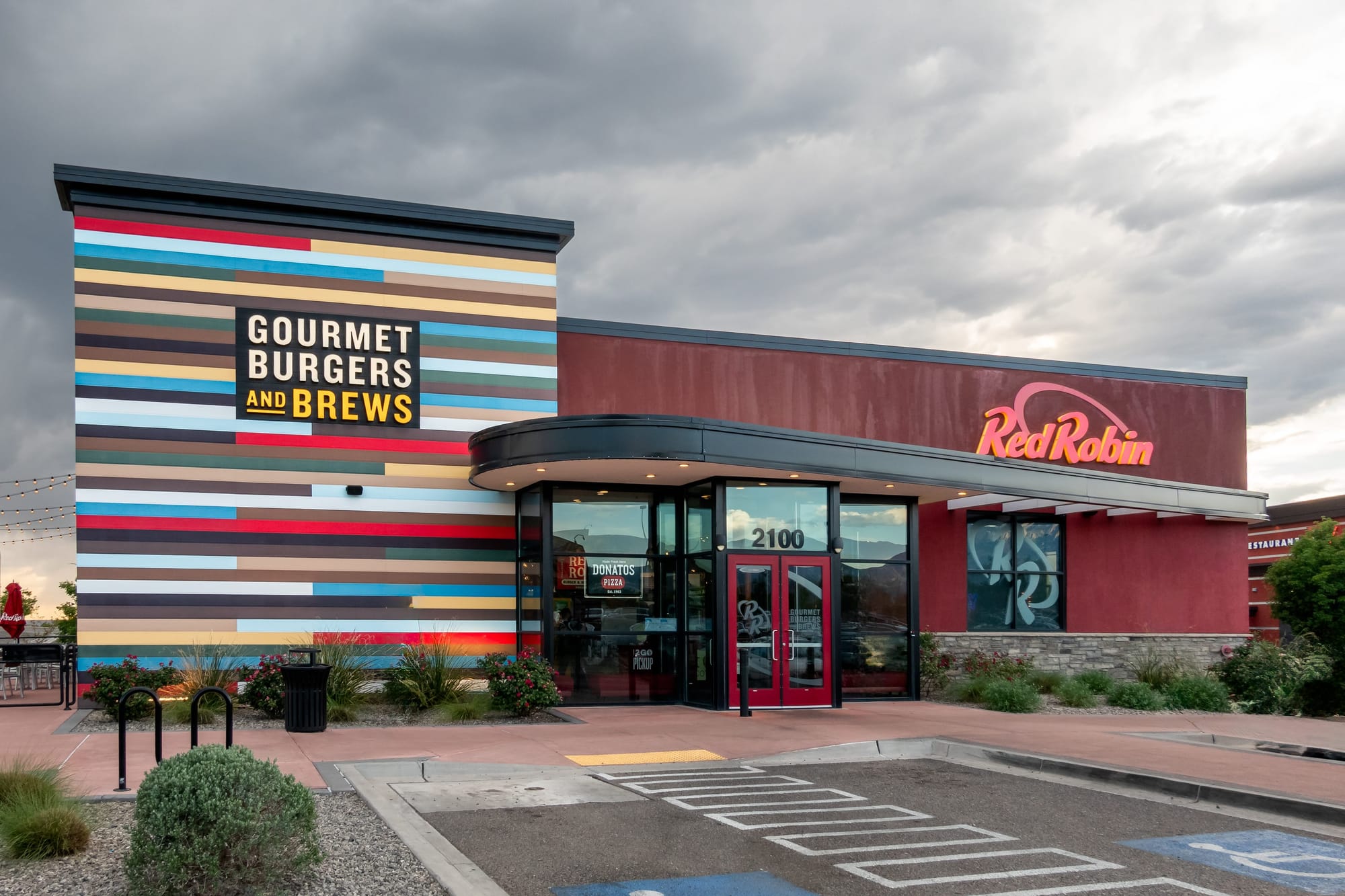
Points based
The Red Robin Royalty rewards program boosts “bottomless perks” with exclusive surprises that loyalty members will receive throughout the year. When diners sign up, they get a free appetizer with their first purchase.
Here’s how it works:
- Diners earn 1 point for every $1 spent on qualifying items
- When customers reach 100 points, they get a $10 reward
- Each member gets a free milkshake or burger on their birthday
- Access to exclusive member-only perks, sneak peeks, and limited-edition releases
The program is simple and guest-friendly—customers always know what they’re earning and what’s next. By combining a clear points structure with meaningful extras, like birthday rewards and surprises, it’s an easy win for long-term customer loyalty.
Apply Red Robin Royalty’s strategy to your restaurant
You can use a similar framework by setting up a basic points system that rewards frequent visits while mixing in a few surprise extras. Capping off total points earned at 100 (a $10 value) prevents diners from racking up too many points and cashing in on an expensive meal. It also makes hitting their reward threshold feel easy and attainable.
4. The Cheesecake Factory: Cheesecake Rewards
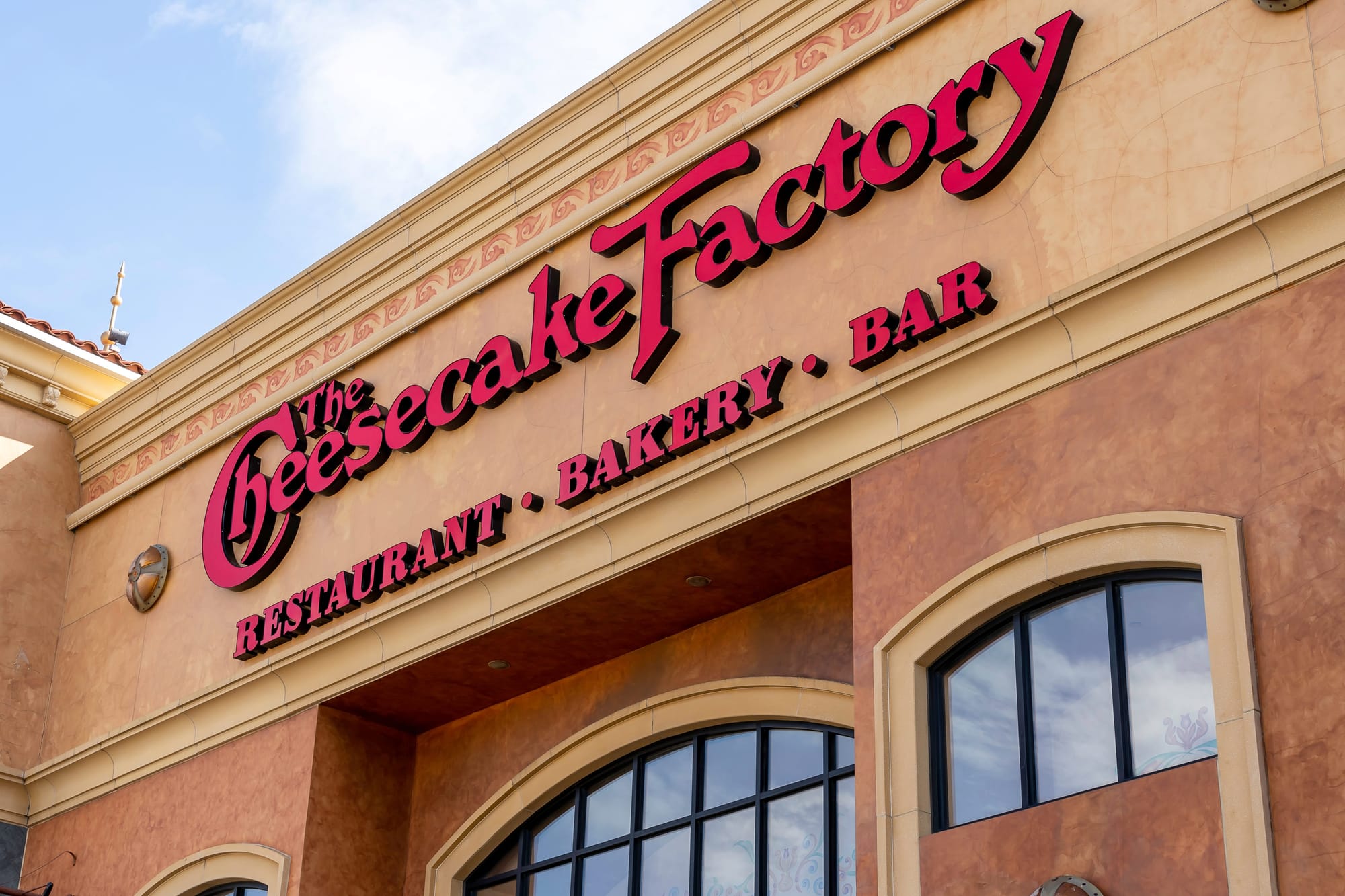
Perks-based (no points)
Cheesecake Rewards offers one of the most basic loyalty programs on our list and has three core benefits:
- Free cheesecake or cake on your birthday
- Access to reservations
- Personalized surprises
The Cheesecake Factory encourages diners to sign up by emphasizing the simplicity of their program, letting diners know it’s “no points, just rewards.”
Here’s how it works:
- Sign up and get a complimentary welcome slice of cheesecake
- Each birthday, redeem a free slice (with a qualifying food or beverage purchase)
- Receive surprise rewards and exclusive offers throughout the year
- Use your membership for priority service to reserve tables, bypassing usual wait times
Because Cheesecake Rewards doesn’t rely on points or tiers, it leans heavily on creating memorable moments and rewarding guests with perks they genuinely value.
Apply The Cheesecake Factory’s strategy to your restaurant
If you like the idea of running a program without points, consider using the perks-only model. Incentivize sign-ups with an immediate reward, like a small app or dessert, and collect customers' contact information and birth date.
Celebrate birthdays with a personalized reward, and send monthly or bi-monthly promotions to keep diners engaged. Making reservations available only to members adds a layer of exclusivity and encourages more diners to sign up—just make sure joining is quick, easy, and free.
5. Buffalo Wild Wings Rewards

Points-based/tiered
Buffalo Wild Wings’ Blazin’ Rewards gives diners the chance to earn points on qualifying purchases and, when they spend enough, unlock a higher earning rate through a status tier.
It’s designed to reward both frequent diners and fans who engage with the brand through the app, promotions, and special events.
Here’s how it works:
- Customers who sign up get a free burger with their first purchase that’s $15+
- Earn 10 points for every dollar spent on eligible purchases
- Spend $250 in a year to reach Blazin’ Status and upgrade to 12 points per dollar
- Get special offers and rewards like free birthday wings and BOGO Free Wings on Tuesdays
- Learn about upcoming offers and new items before they’re released
Blazin’ Rewards encourages both frequent visits and a higher spend per visit. Regulars will be motivated to hit the Blazin’ Status as early as possible to take advantage of higher point earnings and members-only perks.
Apply Buffalo Wild Wings’ Rewards strategy to your restaurant
You can borrow this concept by creating a simple two-tier system—one for all guests and another for your most loyal regulars. Let top spenders unlock slightly better perks, such as bonus rewards or early access to new menu items, to encourage repeat visits and strengthen loyalty.
Fresh loyalty program ideas for FSRs
Full-service restaurants have a unique advantage over QSRs when it comes to building loyalty—the personal connection between staff and guests.
The FSR concept gives staff the one-on-one time they need to make stronger customer bonds, and with a little creativity, you can turn that connection into meaningful rewards that keep diners coming back again and again.
Here are several ideas your most loyal customers will love:
1. Give your regulars an experience they’ll never forget
Offer something your regulars can’t get anywhere else—like a chef’s table dinner, early access to seasonal menus, or invitations to exclusive tasting events.
Experiences like this strengthen customer loyalty in ways that few other things can, and it gives guests stories to share with others who will more than likely sign up for future rewards and events.
2. Use slow nights to your advantage
Instead of running blanket discounts, use your loyalty program to reward members who dine during slower periods. Offer double points, special “members-only pricing,” or bonus perks on Mondays and Tuesdays to help smooth out weekly traffic.
Regulars often love visiting during these quieter shifts because it gives them the chance to take their time and connect more with staff.
3. Create tiered perks that fit your scale
Introduce a simple tier system—Bronze, Silver, and Gold, or whatever fits your brand—that recognizes guests for their frequency or spending.
Even small perks, like complimentary drink upgrades, priority seating, or early access to new menu items, can be enough to motivate repeat visits and make customers feel appreciated without overcomplicating your program.
4. Offer guests a way to support their community
Let diners donate their rewards to a local charity, youth program, or community cause of their choice. These “pay-it-forward” rewards build goodwill and show that your restaurant values connection as much as commerce, giving customers one more reason to feel proud to dine with you.
5. Rotate your rewards with the seasons
Seasonal offers keep your program feeling fresh and relevant. Give members first access to new menu launches, limited-time cocktails, or themed events tied to the calendar. For instance, invite loyalty members to an exclusive preview of your fall menu or offer a complimentary dessert during your holiday dinner week.
How to pick a loyalty program that is right for your business
The best loyalty program for your restaurant is one that fits your goals, operations, and budget. Start by clarifying your goals. Whether you’re launching a new loyalty program or optimizing an existing one, start by clarifying your goals.
Do you want to drive more visits?
Increase your average check size?
Encourage online ordering?
Once you know your goals, find a program style—points, tiers, visits, or perks—and match it to your service model and diner behavior.
For example, quick-service concepts might benefit from instant, transaction-based rewards, while full-service restaurants may see better results from milestone-based perks or personalized offers.
Finally, consider the tools and budget you have to manage it all. For some restaurants, a simple punch card or email list might be enough.
But if you’re looking for a more streamlined, cohesive guest experience that brings everything under one roof, look for technology that connects your loyalty program with other customer touchpoints like online ordering, waitlists, and even a white-labelled guest mobile app.
When those systems work together, guests enjoy a seamless customer journey experience while your team spends less time juggling multiple tools and more time delivering exceptional hospitality.
And the real advantage?
When your loyalty platform is integrated with your marketing tools, every reward becomes a chance to reconnect with guests and increase customer satisfaction. You can automatically send offers to customers who haven’t visited in a while, promote upcoming events, or schedule recurring deals to drive traffic on slower days.
The result is a loyalty program that not only keeps guests coming back but also helps you build a valuable mailing list that fuels long-term growth.
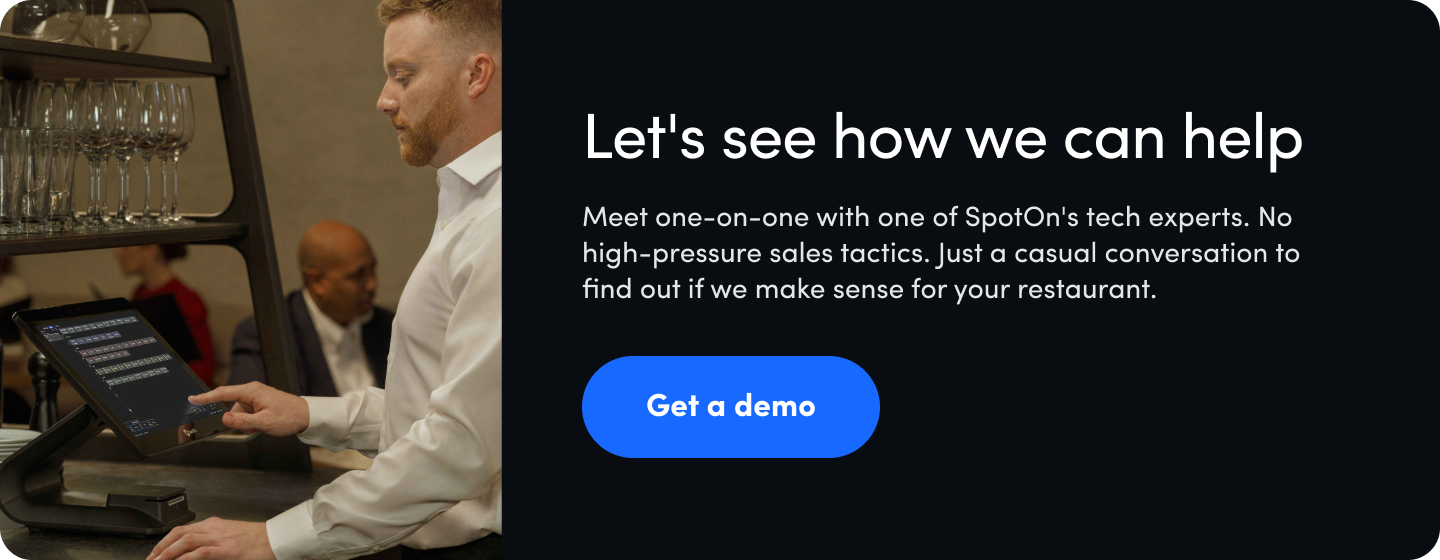
Restaurant loyalty programs frequently asked questions
Looking for quick answers to questions about restaurant loyalty programs? Here are a handful of the most frequently asked questions.
What makes a restaurant loyalty program successful?
The best loyalty programs are simple, consistent, and rewarding. Guests should always know how to earn and redeem rewards, and those rewards should feel valuable without cutting too deep into your margins.
The most successful programs also build connection, not just discounts—using milestones, surprises, and personalization to make diners feel recognized and appreciated.
How do you choose between points-based and visit-based rewards?
It depends on your service model and diner habits. Quick-service restaurants usually do well with points-based programs that reward frequent, smaller purchases.
Full-service restaurants, where guests visit less often but spend more per meal, tend to benefit from visit-based or milestone rewards that feel more personal—like a free appetizer after a few visits or a birthday dessert.
Are app-based loyalty programs better than punch cards?
The short answer is yes. Digital programs automatically track rewards, collect valuable guest data, and make it easy to promote specials or events. But if you’re a small operation just getting started, a simple punch card or email list can still work—it’s better to start simple than not start at all.
How can small restaurants compete with big brands on loyalty programs?
Something independent restaurants have that big brands struggle to duplicate is authenticity and personal connections. You don’t need a massive budget to build a successful loyalty program—just focus on personalization: know your regulars, make your surprises meaningful, and design rewards that feel human, not corporate. Consistency and genuine appreciation go a long way toward keeping guests loyal.
What technology do you need to run a loyalty program?
There are many options available, but look for a system that integrates directly with your POS or online ordering system so your loyalty, marketing, and guest data all live and work together in one place. That kind of integration saves time, reduces tech clutter, and gives customers a seamless experience that keeps them coming back.











